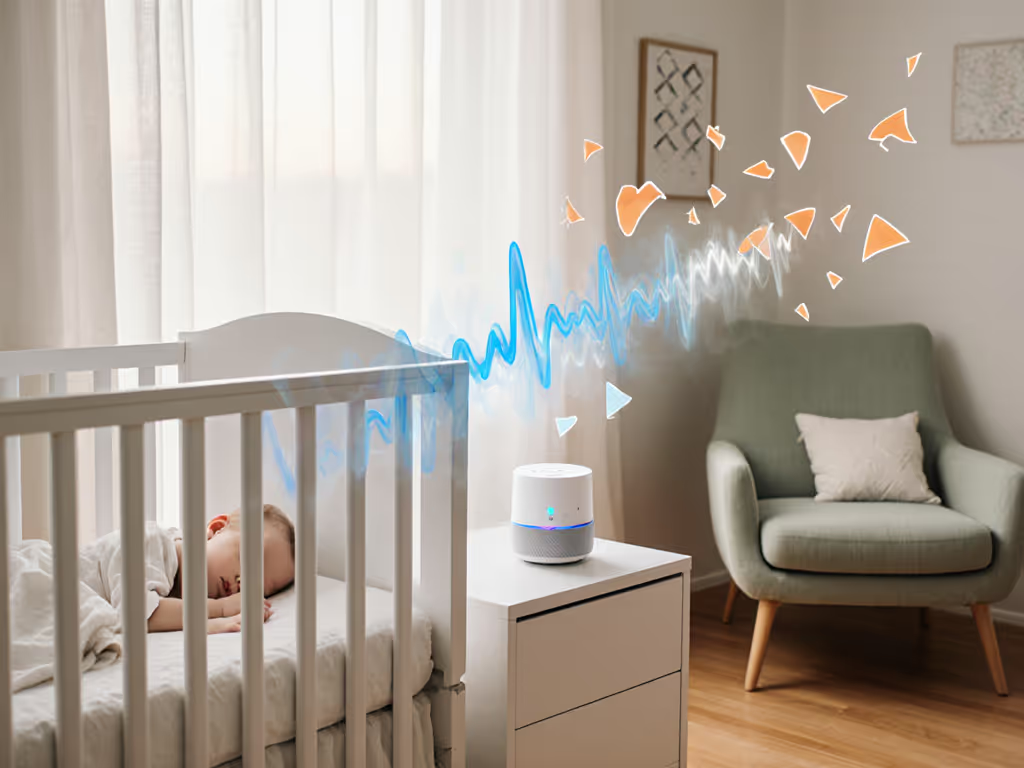
Baby White Noise Benefits: Infant Sleep Science Explained
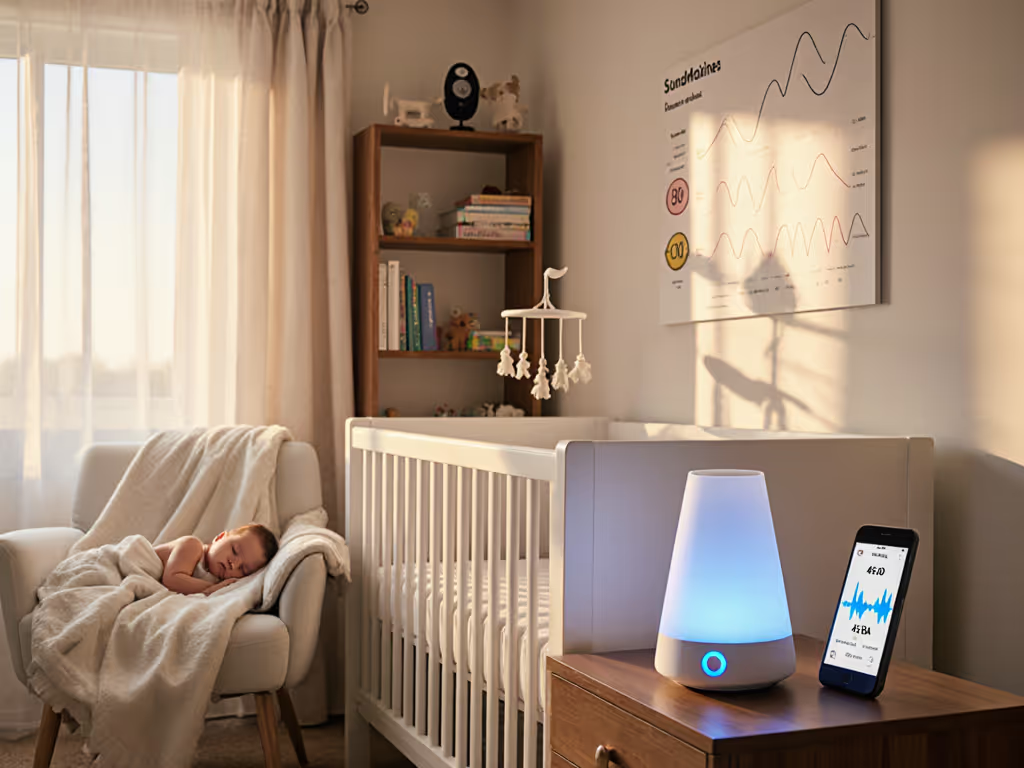
When travel schedules, city noise, and unfamiliar environments disrupt your baby's rest, understanding the baby white noise benefits becomes essential. As a sleep specialist who's helped families create consistent sleep environments from hotel rooms to sibling-shared nurseries, I've seen how infant sleep science translates to real-world solutions. It's not about magic machines, it's about applying measurable principles to noisy realities. Pack light, sleep right.
The 10 Practical Truths About White Noise for Babies
1. It's Not Magic: It's Masking
White noise works primarily by overwhelming the inner ear with a full frequency range, effectively masking sudden environmental sounds that disrupt sleep. This isn't just parent lore; it's physiology. The steady sound creates a predictable auditory environment that helps babies feel secure, much like the muffled sounds they experienced in utero. For parents in urban apartments or households with multiple children, this selective sound blocking becomes a non-negotiable tool for creating sleep-conducive zones.
2. The Science Is Limited But Telling
While robust research is scarce (most studies are small-scale or dated), the 1990 London study remains influential: 80% of newborns exposed to white noise fell asleep within 5 minutes. More recent research confirms that some babies do respond to consistent background sound. However, the infant sleep science community emphasizes that white noise isn't a universal solution. It works differently for each baby, and its effectiveness depends on proper implementation rather than any mystical properties.
3. Neurological Effects Matter Beyond Sleep
The neurological effects of sound for infants extend beyond mere sleep induction. Gentle, consistent noise patterns can help regulate the developing nervous system, creating predictable auditory rhythms that support healthy nervous system maturation. This explains why many babies respond positively to sounds that mimic the in-utero environment (particularly the rhythmic pulse of blood flow and muffled external sounds). Understanding this helps parents select appropriate frequencies rather than defaulting to harsh static.
4. Volume Safety Is Non-Negotiable
The American Academy of Pediatrics recommends keeping white noise machines at least 7 feet from the crib and maintaining sound levels below 50 dBA at the sleeping surface. For step-by-step placement and volume checks, see our AAP volume and distance guide. This isn't arbitrary: research shows that prolonged exposure to higher volumes can potentially impact developing auditory pathways. When I measure sound at crib height in home environments, I consistently find that manufacturer volume indicators rarely translate accurately to real-world distances. Always use a decibel meter app (calibrated properly) to verify levels where your baby's head rests.
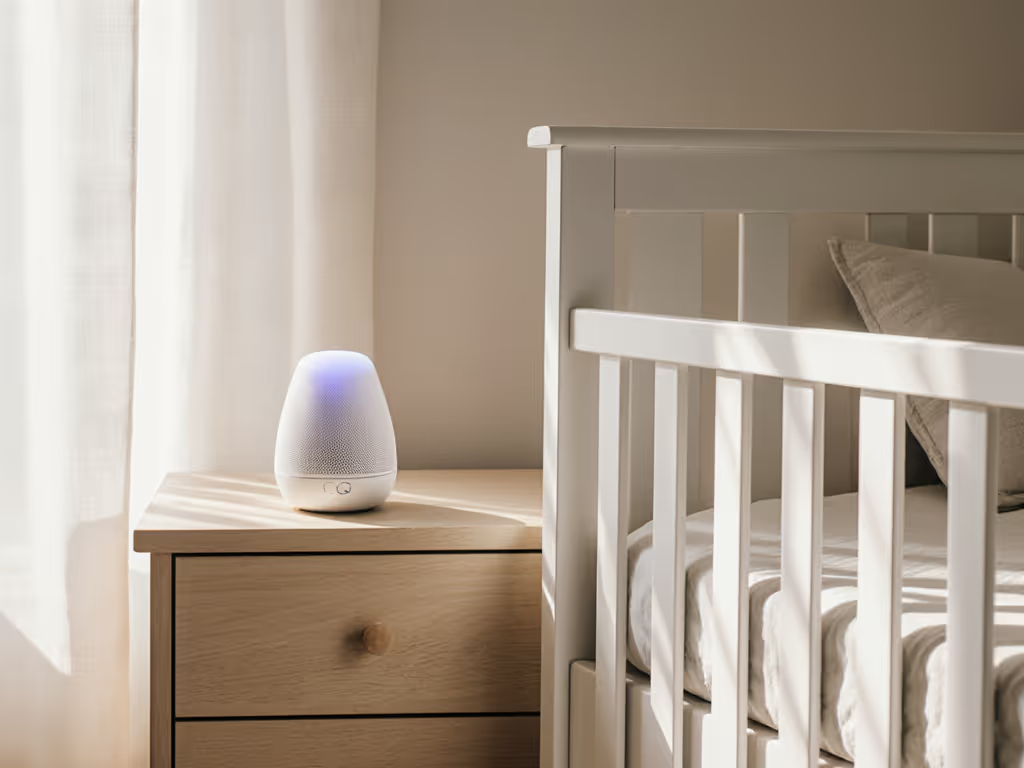
5. Frequency Balance Determines Effectiveness
Not all white noise is created equal. Many machines produce harsh high-frequency sounds that actually agitate sensitive infants rather than soothe them. The most effective white noise machine for newborn setups uses a balanced frequency profile that mimics the womb's natural sound environment (moderate highs with substantial low-frequency content). This is why pink or brown noise (which emphasize lower frequencies) often works better than traditional white noise for infant sleep. When translating lab numbers to travel constraints, I prioritize devices with adjustable frequency profiles.
6. Placement Beats Power
Strategic placement matters more than maximum volume. Position your device across the room from the crib (not on it) to create natural sound diffusion. In my "two-minute room reset" protocol for travel, I use painter's tape to mark optimal placement spots on hotel dressers or rental furniture. This ensures consistent sound distribution without volume spikes. This is critical because white noise helps babies sleep through even, non-intrusive coverage rather than sheer loudness.
7. Travel Requires Different Parameters
Hotel HVAC systems, thin walls, and unfamiliar soundscapes present unique challenges. My Chicago red-eye experience taught me that portable units with battery options and consistent 45-46 dBA output recreate familiarity better than high-powered units. When traveling, I reduce volume slightly (since hotel rooms are often smaller) and use travel-sized diffusers with calming scents to enhance the multisensory environment. This repeatable approach maintains the sleep context your baby recognizes.
8. Baby Sleep Cycles Dictate Timing
Understanding baby sleep cycles is crucial, since infants cycle through light and deep sleep more frequently than adults. White noise should run continuously throughout sleep periods, not just during initial sleep onset. I've seen parents make the mistake of turning machines off after baby falls asleep, only to have them awakened by the sudden silence during lighter sleep phases. Consistent sound provides the auditory safety net needed throughout all sleep stages.
9. Contextual Masking Beats Generic Solutions
The most effective setups account for specific noise challenges. Is traffic your primary disruptor? You need more low-frequency masking. Concerned about sibling noise? Mid-range frequencies become critical. This is where many parents get stuck, because they treat all white noise as identical rather than customizing to their environment. My packing checklists include quick-reference cards for matching sound profiles to common noise problems, ensuring your setup addresses what's actually keeping baby awake.
10. Consistency Creates the Real Benefit
The greatest baby white noise benefits come from consistent application. It is not about the machine itself: it is about creating a repeatable sleep environment your baby recognizes anywhere. When I work with families, we focus on creating identical auditory conditions whether at home, grandma's house, or a hotel room. This predictability, more than any single sleep session, builds the neural pathways that support healthy sleep development. Portable, repeatable settings turn chaos into rest and save the next day.
Your Actionable Next Step
Start tonight with a simple experiment: measure your current white noise setup at crib height using a decibel meter app. If it exceeds 50 dBA, reduce volume incrementally until it hits the safe range (45-50 dBA is ideal). Do this for three consecutive nights while noting sleep patterns. This small adjustment (part of my foundational two-minute room reset) creates immediate safety improvements while you determine if white noise genuinely supports your baby's sleep.
Remember that infant sleep science favors flexibility over rigidity. Make any room familiar: pack light, measure once, repeat. With measured targets and repeatable setups, you're not just creating better sleep tonight, you are building the foundation for lifelong healthy sleep habits.
Related Articles

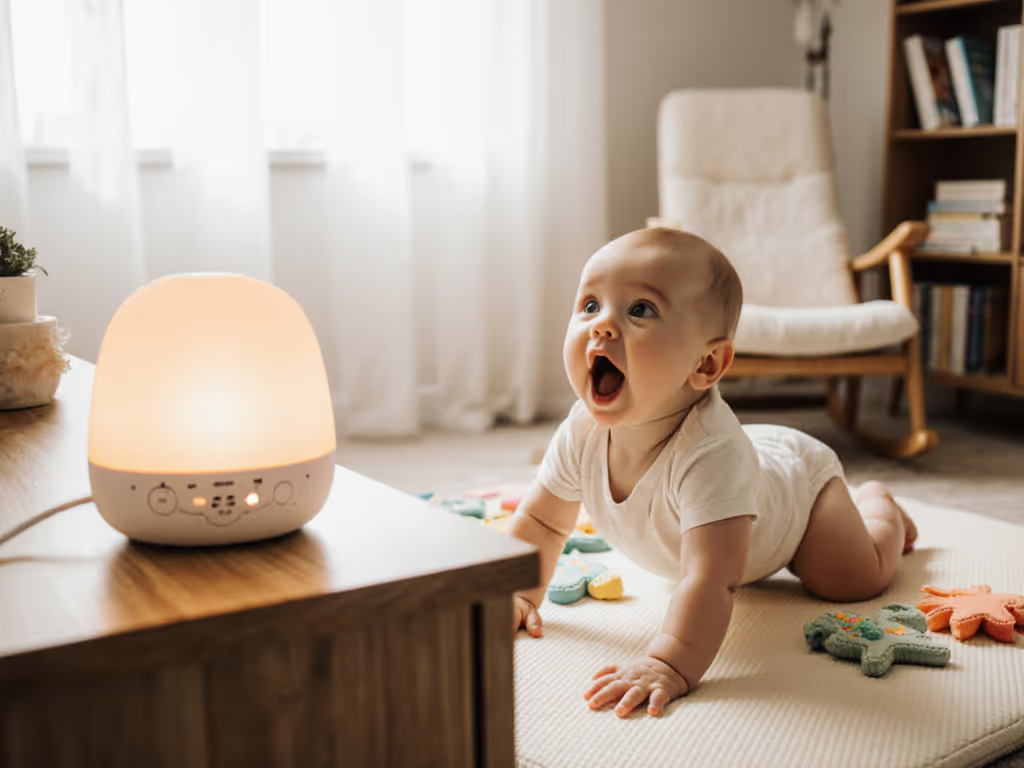
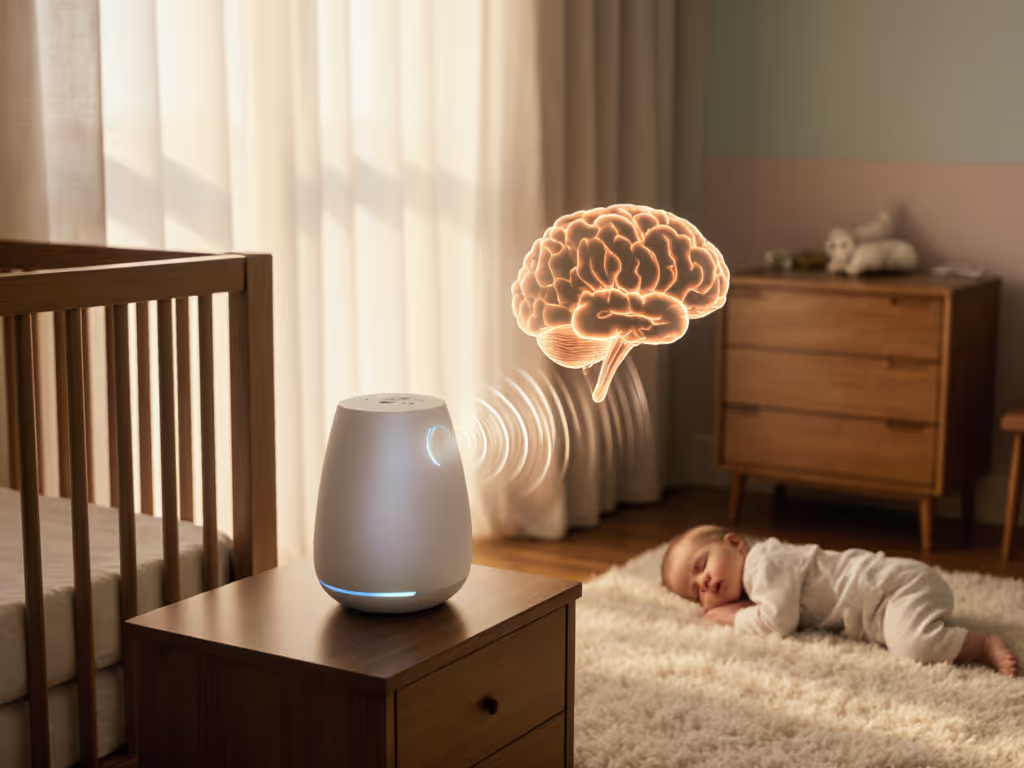
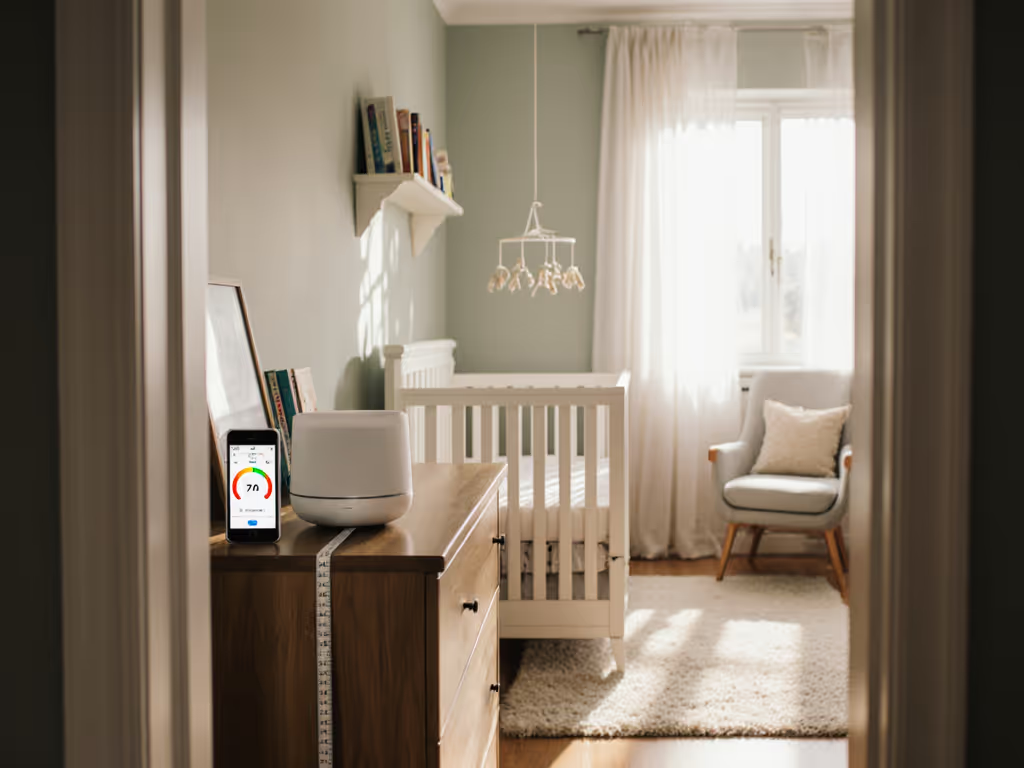
Newborn White Noise Machine Safety: Distance & Volume Rules
Focus on crib-distance measurements, not box specs: place the machine 7–8 feet from the crib and target 45–50 dBA with dBC no more than 5 dB higher while avoiding spectral peaks. Get clear steps for accurate phone-based testing and room-specific placement so masking works without overstimulating infants.
